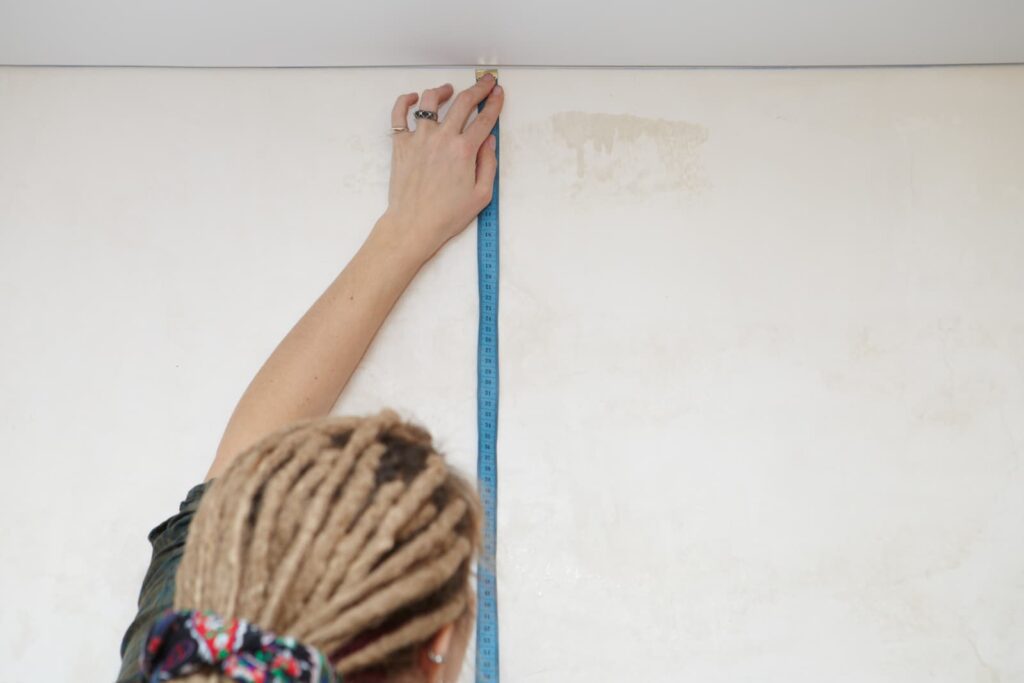
My Ceiling Is Too Tall to Reach – Not!
If you’re wondering how to measure ceiling height in your facility but don’t know where to start, we’ve got you covered. Whether you’re determining the standard ceiling height, figuring out how tall your ceilings are, or measuring for a project, this guide will help.
Your ceiling may not be as tall as it seems! Even high or low ceilings can work perfectly for hanging signs (check out our quick how-to on sign hanging) and décor. With the right sign-hanging accessories, you can ensure a secure, efficient installation, no matter the height.
If you’re like me (sorry, but you probably are!), estimating ceiling height can be tricky.
In the October 23, 2013 issue of the Journal of Neuroscience, a report determined that depth perception in humans is influenced by that person’s arm length, among additional factors (let’s not event talk about estimating square feet). Suggesting that depth perception is subjective ensures that “eye-balling” is far from an industry-standard practice.
Think Your Ceiling Is 30 Feet? Think Again!
In most regions, the standard ceiling height is 9 feet, offering plenty of space for overhead fixtures like ceiling fans. The minimum ceiling height is typically 7 feet, but many business owners overestimate their ceilings. I’ve spoken with customers who swore their store ceilings were 30 feet, only to find out they were actually closer to 20 feet using the simple method below.
At 20 feet (even 27 feet!), your ceiling is still low enough to use the Clik-Clik™ Magnetic Sign Hanging System—allowing you to hang signs safely from the floor (no tape measure needed!). The right sign-hanging accessories make all the difference for a professional, hassle-free setup.
Steps to Measure a Ceiling
- Recruit someone to stand against the wall below the ceiling you wish to measure. Or you can use an object like a door, store fixture, or window instead… make sure you know its height.
- Stand about 20 feet in front of the same wall, extend your arm in front of you, and “measure” the person’s height using your thumb and index finger by forming an open backward C.
- Continue “measuring” up the wall with the original spacing established between your thumb and finger until you reach the ceiling – no tape measure needed.
- Take your friend’s approximate height and multiply it by the number of “measurements” from the floor to the ceiling. 6′ x 2.5 = 15′ …
Download ‘How To Measure Ceiling Height’ PDF here or Watch our video about How To Measure Your Ceiling Height
This graphic demonstrates the procedure.

Determining the Height of Your Ceiling
Now, you’ve seen how easy it is to determine the ceiling height in your facility. There is no need to schlep a ladder around the building when you can implement the Clik-Clik™ Magnetic Sign Hanging System to easily and quickly hang signs and other ceiling displays from the safety of the floor. Ease of use ensures consistent execution of the sign program and saves time directed to further enhancing the customer experience.
For contractors, it’s an easier means of hanging lights, acoustic panels and ductwork. Shop Clik-Clik™
By the way, if your ceiling height exceeds 27 feet, we have an excellent solution for you. Reach out and ask us about the FlatHat™ System from Clik-Clik. It’s a game-changer for managing tall ceilings safely and efficiently.
Next, we’ll show you how simple it is to hang level signs, even on slanted or sloped ceilings!
For contractors, it’s an easier means of hanging lights, acoustic panels and ductwork – learn about the easiest, simplest fixture hanging solution available.
For business owners, retailers, and restaurants learn how to make good use of your ceiling space.
About Ceiling Outfitters
Since 2007, Ceiling Outfitters® has partnered with over 2,000 organizations and 22,000 facilities nationally within the retail, manufacturing, education, and hospitality industries. Ceiling space and storefront windows are optimal visual display locations, and we help customers utilize these areas safely, quickly, easily, and more economically. Please contact us for more information and learn how we can help you put the ceiling to work with various solutions we have available.



